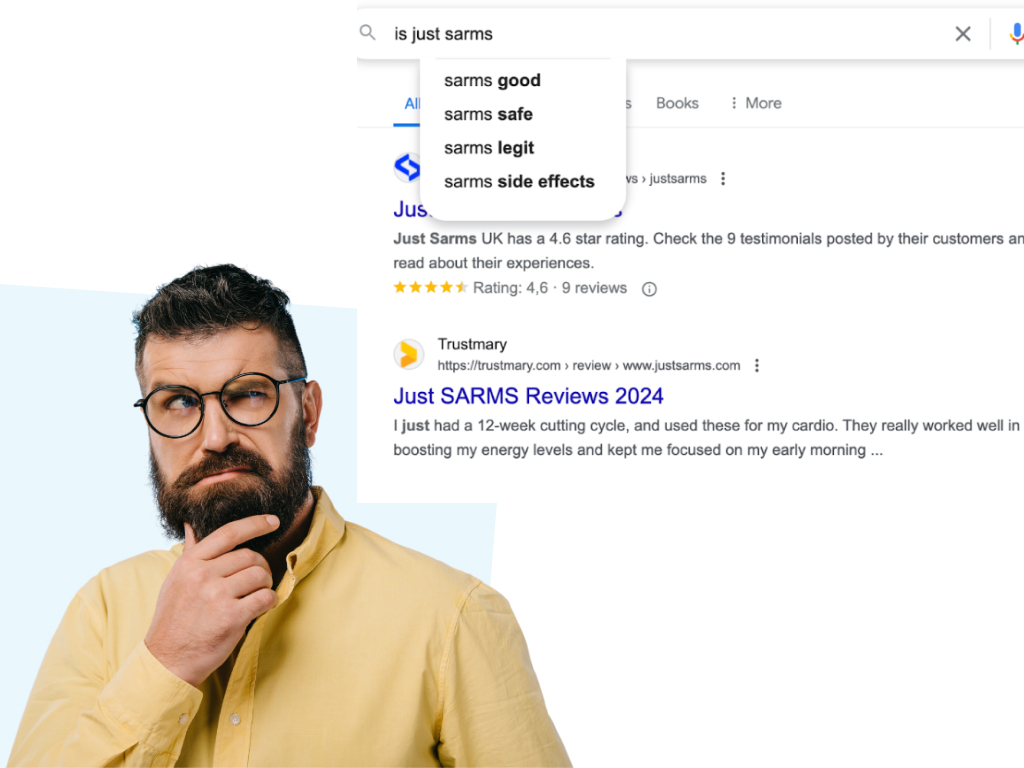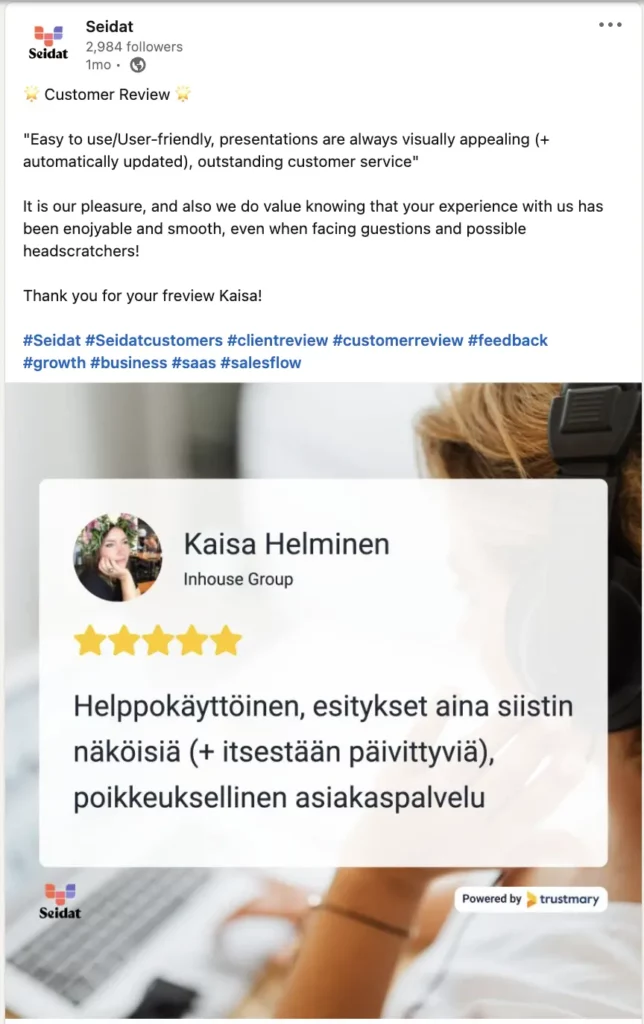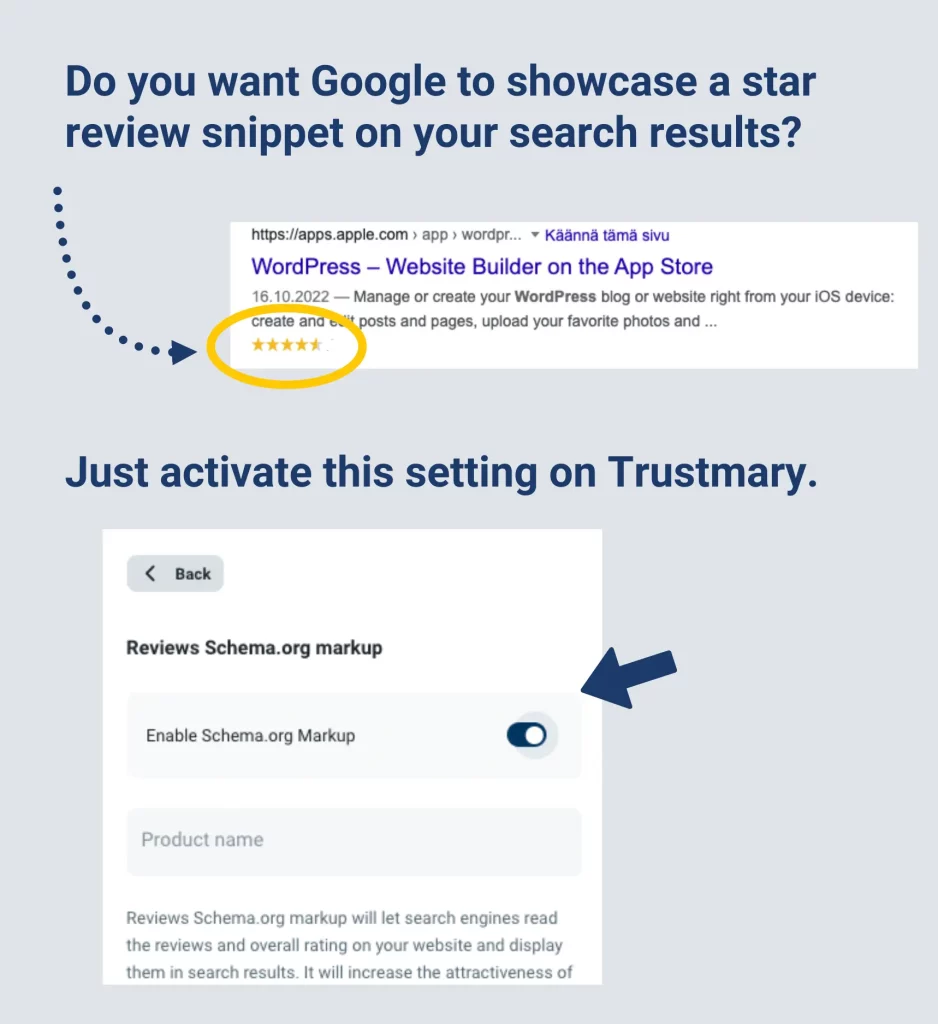Top 10 Reputation Management SEO Techniques


Managing your online reputation is a crucial part of your marketing strategy.
Of course, reputation starts with everyday interactions with customers, prospects, and the general public. You can't separate online reputation from your real-life image.
Many great businesses have a good reputation among existing and past customers, but not beyond. They don't know how to extend the reputation beyond the immediate circle and to the new prospective customers.
This guide is for companies that deserve a great online reputation but lack the knowledge and resources to truly leverage it.
With effective SEO strategies, you can ensure that your brand maintains a positive image online, attracts more customers, and stands out from the competition.
Here are the top 10 reputation management SEO techniques every business should know.
What is Reputation Management SEO?
First off: let's define SEO.
SEO = Search Engine Optimization
SEO comes from the term search engine optimization, and refers to tactics companies use to get found on search engines.
These include many aspects
- On-page SEO: everything from content creation to internal link-building
- Off-page SEO: Getting PR mentions to having listings in directories
SEO makes sure your prospective customers can find you online. For local companies, local SEO plays a big role.
How difficult search engine optimization is depends on your industry and market area. If this all sounds alien to you, we recommend getting in touch with an SEO expert who specializes in your field.
Reputation Management SEO
Reputation management SEO focuses on one specific issue.
How to be found by potential customers online AND how to make sure the impression is positive.

Reputation management SEO refers to the practice of using search engine optimization (SEO) strategies to influence and control a brand’s or individual’s online reputation.
The goal is to ensure that positive, relevant, and accurate content ranks higher in search engine results, while negative or misleading content is pushed down in the rankings. This helps create a favorable perception among users who search for the brand or individual online.
10 Reputation Management SEO Tactics
1. Optimize for Branded Keywords
Why It's Important: Ensuring your website ranks highly for searches involving your brand name and related keywords helps you control the narrative around your brand.
How to Do It:
- Use tools like Google Keyword Planner to identify branded keywords.
- Optimize your website’s meta tags, headers, and content with these keywords.
- Create dedicated pages for different aspects of your brand (e.g., About Us, Services).
2. Create High-Quality Content
Why It's Important: Regularly publishing valuable content helps build authority and trust, encouraging positive engagement from users.
How to Do It:
- Start a blog addressing common customer questions and industry trends.
- Include a mix of content types like articles, infographics, and videos.
- Focus on creating evergreen content that remains relevant over time.
3. Encourage and Manage Reviews
Why It's Important: Positive reviews enhance your online reputation and influence potential customers. Reviews affect search engine rankings through many different mechanisms, and the Google search algorithm leak back in 2024 proves it.
How to Do It:
- Ask satisfied customers to leave reviews on platforms like Google My Business, Yelp business reviews, and Facebook.
- Respond to all reviews, both positive and negative, professionally and constructively.
- Use review management tools to track and respond to feedback.
4. Leverage Social Media
Why It's Important: Social media platforms are powerful tools for managing your online reputation and engaging with your audience.
How to Do It:
- Maintain active profiles on major social media sites such as Facebook, Twitter, and LinkedIn.
- Post regularly and engage with your audience through comments, messages, and shares.
- Monitor mentions of your brand and address any issues promptly.
- Share customer reviews on social media!
Seidat shares customer reviews on its LinkedIn.
Pro tip: Tag the customer to get them to reply!

5. Use Schema Markup
Why It's Important: Schema markup helps search engines understand your content, making it more likely to appear in rich snippets.
How to Do It:
- Implement schema markup for reviews, products, and business information on your website.
- Use Google’s Structured Data Markup Helper to create and test your markup.
6. Build High-Quality Backlinks
Why It's Important: Backlinks from reputable sites enhance your site's authority and can improve your search rankings.
How to Do It:
- Reach out to industry blogs and websites for guest blogging opportunities.
- Create high-quality content that others want to link to.
- Use tools like Ahrefs or SEMrush to identify and replicate competitors’ backlinks.
7. Monitor Online Mentions
Why It's Important: Keeping track of what’s being said about your brand online allows you to respond quickly and manage your reputation effectively.
How to Do It:
- Set up Google Alerts for your brand name and key products.
- Use social listening tools like Hootsuite or Mention to monitor social media mentions.
- Regularly check review sites and forums for discussions about your brand.
8. Optimize Google My Business
Why It's Important: An optimized Google My Business profile can significantly improve your local SEO and online reputation.
How to Do It:
- Ensure all information on your Google My Business profile is accurate and up-to-date.
- Add high-quality photos and encourage customers to leave reviews.
- Use the post feature to share updates and promotions.
9. Implement Technical SEO
Why It's Important: Technical SEO ensures that your website is accessible, fast, and secure, which are critical factors for search engine rankings.
How to Do It:
- Improve site speed by optimizing images and using a content delivery network (CDN).
- Ensure your site is mobile-friendly with responsive design.
- Implement HTTPS to secure your site and improve trust with users.
You can also consider hiring an agency that provides technical SEO services and focus your efforts on something else!
10. Address Negative Content
Why It's Important: Effectively managing negative content can prevent it from damaging your online reputation.
How to Do It:
- Contact the site owners to request the removal of false or defamatory content.
- Use SEO techniques to push negative content down in search results by promoting positive content.
- Address the issues mentioned in negative content publicly to show transparency and commitment to improvement.
Spend Time on Reputation Management SEO
Effective reputation management SEO is a continuous process that requires attention to detail and a proactive approach.
By implementing these top 10 techniques, businesses can
- build a strong online presence
- improve customer trust, and
- maintain a positive reputation.
Regularly updating your strategies and staying informed about the latest SEO trends will ensure your efforts remain effective and impactful.
Create a review syndication strategy to get the most out of your reviews – and collect more.
Online Reputation Management with Trustmary
Trustmary can significantly aid companies in reputation management SEO through several key features that:
- Enhance online visibility in search engine results pages
- Improve customer engagement
- Manage the brand's reputation
- Get more positive reviews
- Helps improve status on online review sites
Note that Trustmary isn't an SEO-focused tool, but using the Trustmary Method will benefit your organic visibility.

1. Collecting and Displaying Customer Reviews
- Automated Review Collection: Trustmary helps businesses gather authentic customer reviews by automating the collection process. Positive reviews boost SEO by generating fresh content and improving click-through rates.
- Review Widgets: By displaying reviews prominently on your website using Trustmary’s review widgets, businesses can improve user trust and increase on-page engagement metrics, which are beneficial for SEO.
2. Video Testimonials
- Engaging Content: Trustmary enables companies to collect video reviews easily. Video content is highly engaging and can enhance user time on site, reducing bounce rates and positively impacting SEO.
- SEO-Friendly Embeds: Embedding video testimonials on your site with proper SEO practices, like using schema markup, can help these videos rank in search engine results, increasing visibility.
3. Managing Online Reputation
- Feedback Systems: Trustmary’s feedback systems allow businesses to address customer issues privately before they escalate into public negative reviews. This proactive management helps maintain a positive online reputation.
- Monitoring and Alerts: Trustmary provides monitoring tools to track reviews and brand mentions across various platforms, enabling businesses to respond swiftly and appropriately. Import reviews from all sources, and we'll notify you about new reviews.
4. SEO-Optimized Testimonials
Structured Data: Using structured data markup for review widgets ensures they can appear as rich snippets in search results, improving visibility and click-through rates.
This is a built in feature in Trustmary. All you need to do is choose from each widget, if it should be turned on or not.

5. Boosting Social Proof
- Social Proof Widgets: Trustmary’s social proof widgets display real-time customer interactions and testimonials, which can improve conversions and engagement on your site, indirectly benefiting SEO.
- Case Studies and Success Stories: Publishing detailed case studies and success stories from satisfied customers not only builds credibility but also provides valuable content that can be optimized for search engines.
Start Online Reputation Management – NOW
By leveraging Trustmary's tools and services, companies can improve their online reputation, engage more effectively with customers, and enhance their SEO efforts.
These improvements not only foster trust and credibility but also contribute to higher search engine rankings and better overall online visibility.
FAQs about Reputation Management SEO
What is reputation management SEO?
Reputation management SEO involves optimizing search engine results to shape a positive online image for a brand or individual. This includes using SEO techniques to push positive content higher in search results while suppressing negative or irrelevant content.
Why is reputation management important?
Reputation management is crucial because it helps build trust and credibility with potential customers. A positive online reputation can attract more customers, enhance brand loyalty, and mitigate the impact of negative content.
How can I improve my online reputation?
Improving your online reputation involves:
- Creating high-quality content
- Encouraging and managing customer reviews
- Engaging on social media
- Building high-quality backlinks
- Monitoring online mentions
- Addressing negative content promptly and transparently is also essential.
What tools can help with reputation management?
Several tools can assist with tracking reputation management, including Google Alerts, Hootsuite, Mention, SEMrush, and Ahrefs. These tools help monitor brand mentions, track reviews, and analyze SEO performance.
With customer reviews, Trustmary can help. You can even get a review page that features all your reviews and shows up high in search engine results.
How do I respond to negative reviews?
Responding to negative reviews involves addressing the issues raised professionally and constructively. Apologize if necessary, offer solutions, and show that you value customer feedback. This demonstrates your commitment to improvement and customer satisfaction.